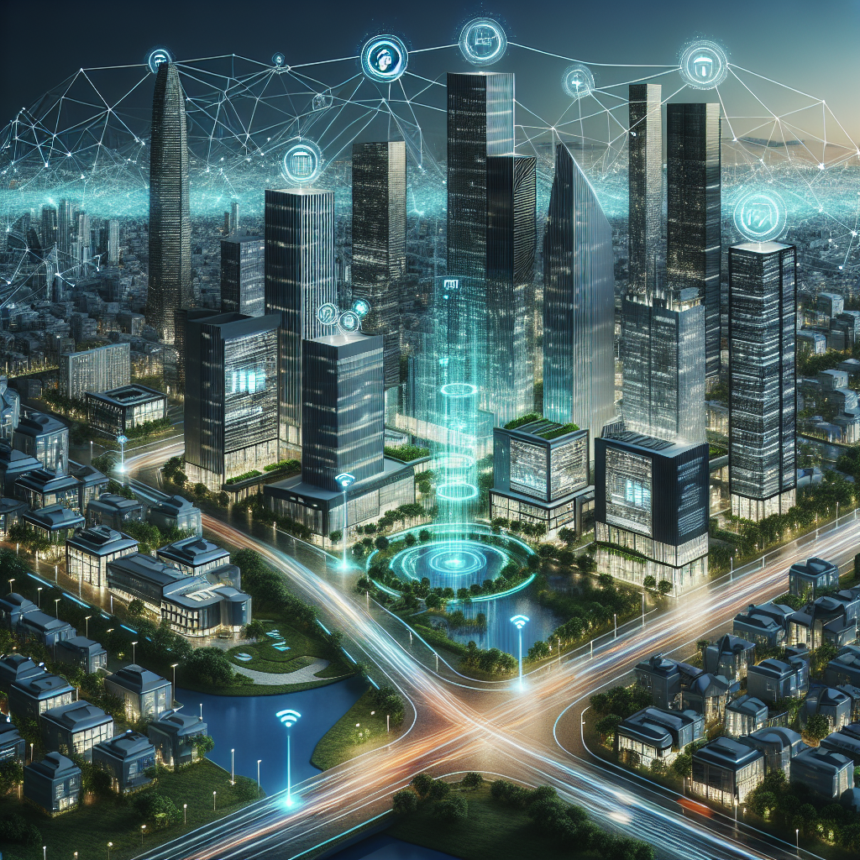Smart Cities: How IoT is Revolutionizing Urban Planning
In an era defined by rapid technological advancement, the concept of "smart cities" is transforming urban landscapes around the globe. Defined as urban areas that leverage Internet of Things (IoT) technologies to enhance their operational efficiency, sustainability, and the quality of life for inhabitants, smart cities represent a paradigm shift in urban planning. By integrating digital solutions into infrastructure and services, city planners are addressing challenges like traffic congestion, pollution, energy usage, and public safety more effectively than ever before.
The Role of IoT in Smart Cities
At the heart of smart city development lies Internet of Things (IoT) technology, a network of interconnected devices that collect and exchange data. The integration of IoT into urban infrastructure allows for real-time monitoring, data analysis, and effective response mechanisms that were not previously possible. Key areas where IoT is influencing urban planning include:
-
Traffic Management: IoT sensors are embedded into roads, traffic lights, and even vehicles to gather real-time data on traffic patterns. This information helps city planners optimize traffic flow, reduce congestion, and lower emissions. Smart traffic lights can adapt to traffic conditions, improving commute times and enhancing road safety.
-
Waste Management: Smart bins equipped with sensors are now being deployed to monitor fill levels, enabling efficient waste collection schedules. This reduces unnecessary pickups and lowers operational costs, contributing to cleaner urban environments.
-
Public Safety: IoT-enabled surveillance cameras and environmental sensors can improve safety in urban areas. These devices help law enforcement and emergency services respond quickly to incidents, while tools that monitor air quality contribute to public health initiatives.
-
Energy Efficiency: Smart grids utilize IoT sensors to optimize energy distribution. By monitoring energy consumption in real-time, cities can better manage resources, reduce wastage, and promote the use of renewable sources. This contributes significantly to sustainability goals and helps combat climate change.
- Citizen Engagement: Smart city platforms often provide applications and interfaces that allow residents to interact with city services. Through these tools, citizens can report issues, access information, and receive alerts about local events, significantly improving community engagement.
Urban Planning Strategies Enhanced by IoT
The integration of IoT technology into urban planning goes beyond individual systems and services. It promotes a holistic, data-driven approach to city management that supports strategic long-term vision. Here’s how cities are implementing these strategies:
-
Data-Driven Decision Making: By leveraging the vast amounts of data collected through connected devices, urban planners can identify trends, assess service effectiveness, and forecast future needs. This shifts planning from reactive to proactive, ensuring cities evolve in alignment with community needs.
-
Resource Allocation: IoT technology allows for precise tracking of resources and facilities, leading to optimized use and reduced costs. City agencies can allocate maintenance budgets effectively and tailor services to meet the demands of specific neighborhoods.
- Sustainability Goals: Urban planners are incorporating IoT into climate resilience strategies, using real-time data to better manage water resources, reduce carbon footprints, and promote sustainable transport methods. IoT solutions help cities achieve international sustainability standards and improve quality of life for residents.
Challenges in IoT Integration
Despite the myriad benefits, the road to smart cities is fraught with challenges. Issues of data privacy, cybersecurity, and the digital divide are critical considerations for city planners. Implementing IoT solutions requires significant investment, technical expertise, and a collaborative approach involving government, private sector partners, and the community.
Conclusion
The future of urban living hinges on the successful integration of IoT in city planning. As cities become smarter, they promise to be more efficient and sustainable, fostering environments that prioritize the well-being of their residents while addressing the complex challenges of urbanization. The path ahead is not without hurdles, but the potential benefits of smart cities make it a worthy pursuit.
FAQs
Q1: What are smart cities?
A: Smart cities utilize IoT technology to enhance urban management and services, focusing on sustainability, efficiency, and quality of life for residents.
Q2: How does IoT contribute to improving traffic management in cities?
A: IoT sensors monitor real-time traffic patterns, enabling optimization of traffic flow and reduction of congestion through responsive traffic light systems.
Q3: What are the benefits of smart waste management systems?
A: Smart waste management systems use IoT-enabled bins to monitor fill levels, reducing unnecessary collection trips and operational costs while improving environmental cleanliness.
Q4: What challenges do cities face when implementing IoT technologies?
A: Cities must navigate issues related to data privacy, cybersecurity, investment costs, and ensuring equitable access to technology for all community members.
Q5: How can citizens engage with smart city initiatives?
A: Many smart city platforms offer applications where residents can report issues, access city services, and contribute to community planning efforts, enhancing civic engagement and transparency.









